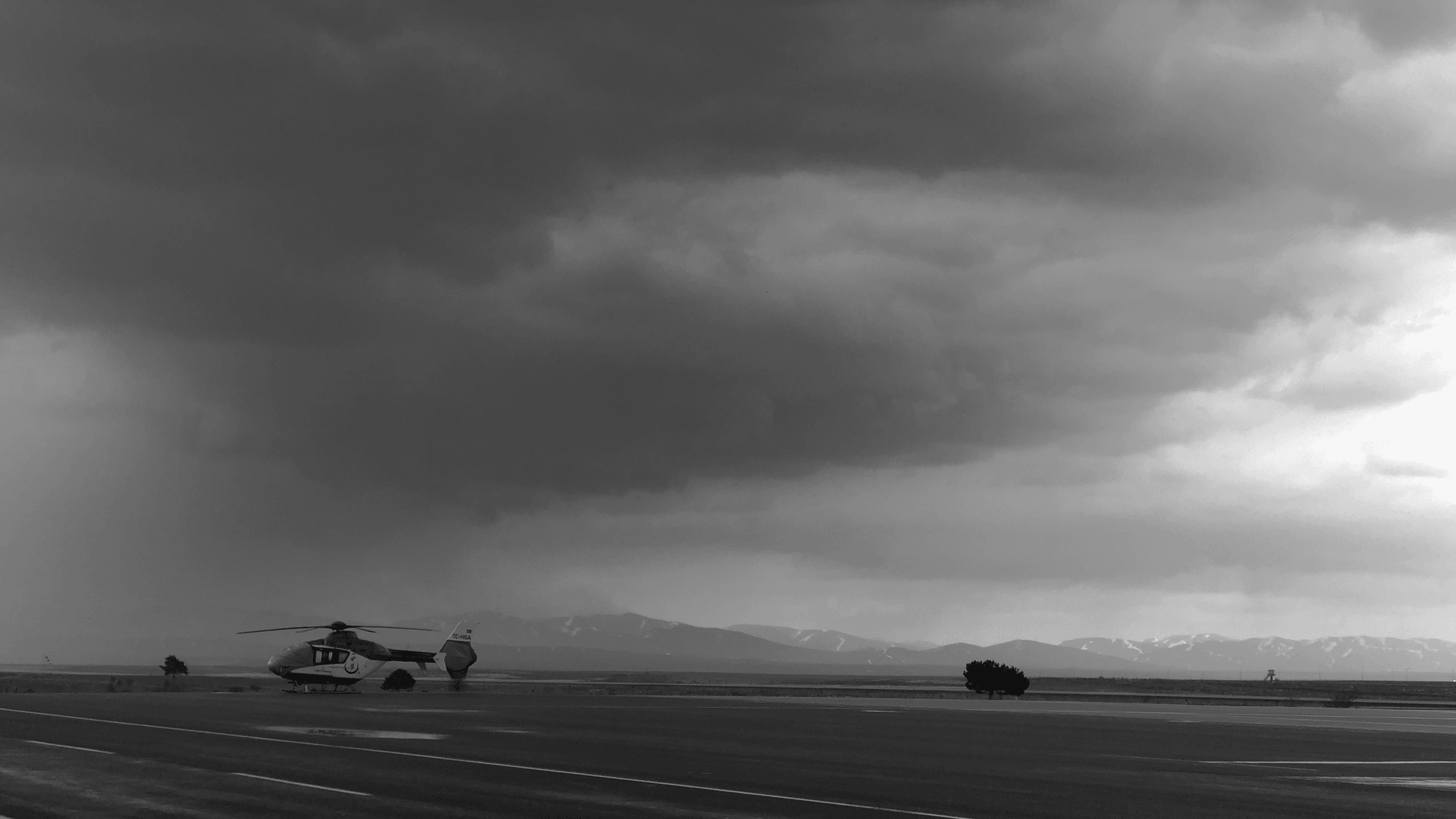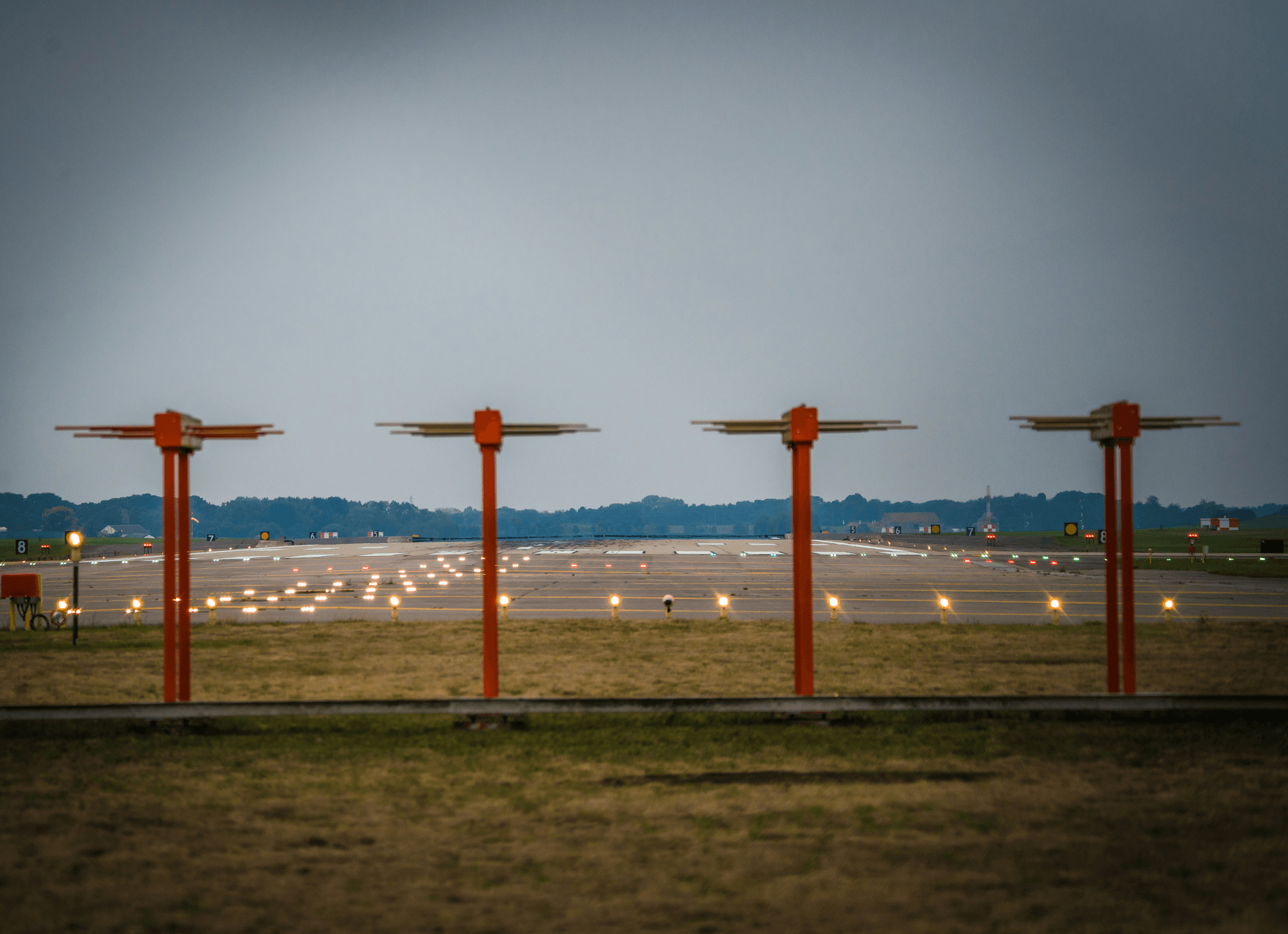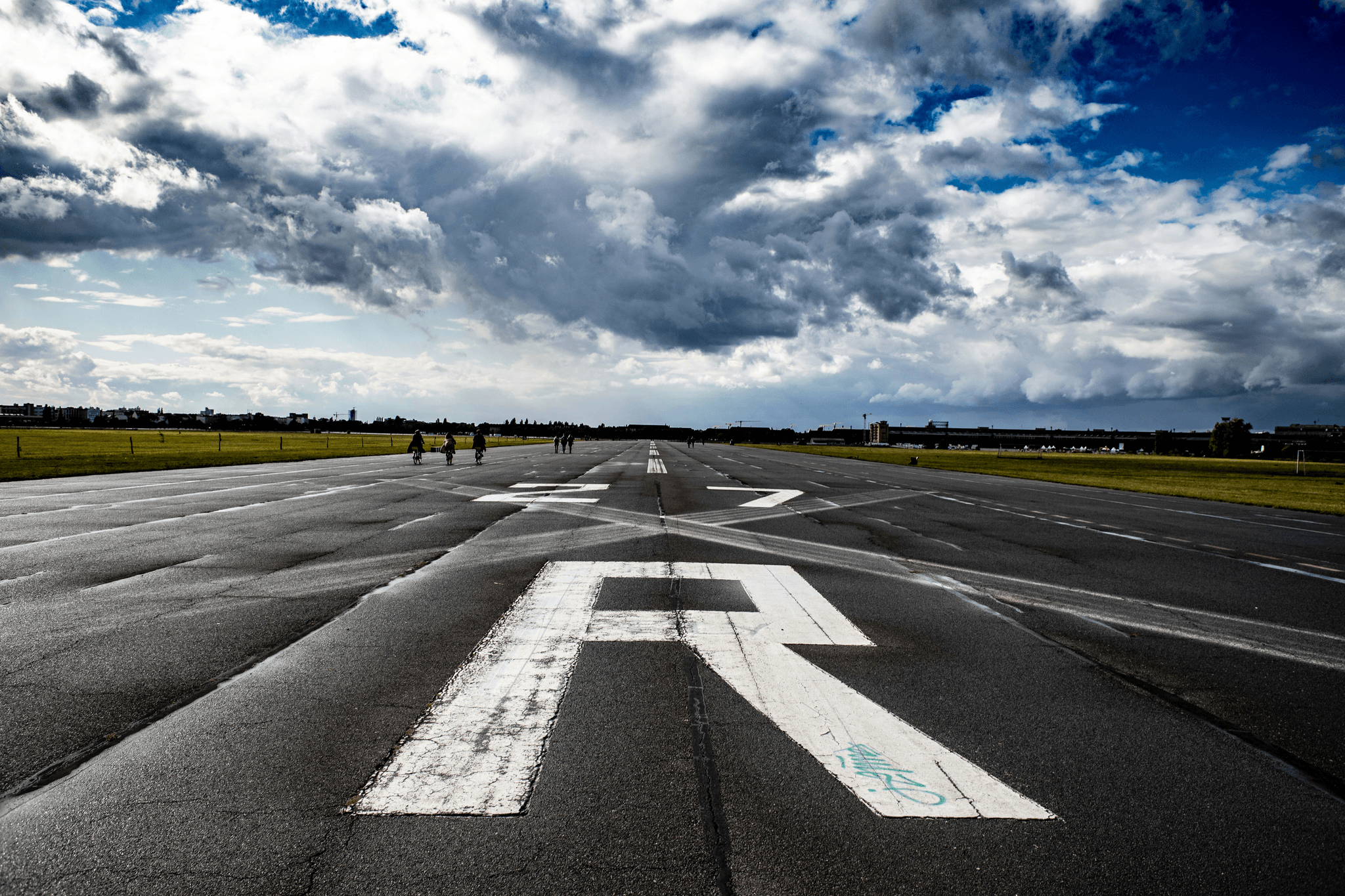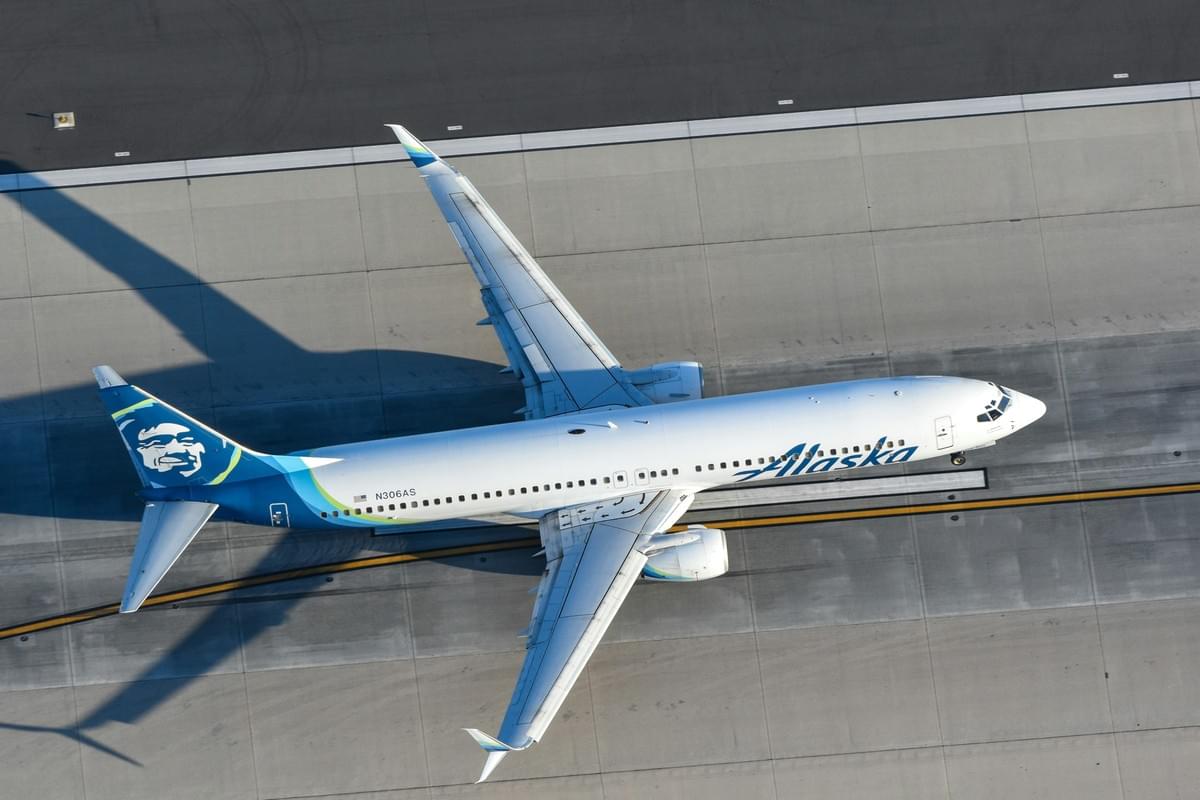Introduction

Navigating the skies requires precision, and one of the linchpins of safe flight operations is understanding the runway visual range (RVR). This critical measure helps pilots and air traffic controllers gauge visibility conditions during takeoff, landing, and taxiing. The runway visual range chart serves as an essential tool in this process, translating complex data into actionable insights that ensure safety in low-visibility situations.
Importance of Runway Visual Range
Runway visual range is paramount for maintaining safety standards in aviation. It directly influences decision-making in challenging weather conditions, enabling pilots to determine whether it’s safe to proceed with an approach or landing. Without a clear understanding of RVR—what it is and how it works—flight operations could face significant risks, making its comprehension vital for all aviation personnel.
Basics of the Runway Visual Range Chart
The runway visual range chart provides a graphical representation of visibility data essential for flight operations. It simplifies complex information into user-friendly formats that can be quickly interpreted by pilots and ground control teams alike. By familiarizing oneself with this chart, one can gain clarity on what is runway visual range (RVR) and how it impacts various aspects of flight.
Key Terms Explained
To fully appreciate the nuances of RVR, several key terms must be understood: visibility, minimums, and ICAO. Each term plays a crucial role in determining what are the minimums for runway visual range and how they affect air traffic management globally. Understanding these terms sets the stage for deeper discussions about what is the runway visual range in METAR reports and how RVR measurement techniques are employed.
What is the Runway Visual Range?

The concept of Runway Visual Range (RVR) is crucial in aviation, serving as a key metric for assessing visibility conditions on the runway. RVR essentially quantifies how far a pilot can see down the runway, which directly impacts decision-making during takeoff and landing. Understanding RVR is vital for ensuring safe flight operations, especially in adverse weather conditions.
Definition and Purpose
Runway Visual Range (RVR) is defined as the distance over which a pilot can see the runway surface markings or lights from a specific point. The primary purpose of RVR is to provide pilots and air traffic controllers with critical information about visibility conditions that may affect aircraft operations. By utilizing tools like the runway visual range chart, stakeholders can make informed decisions regarding takeoffs, landings, and potential diversions.
How It Affects Flight Operations
The impact of RVR on flight operations cannot be overstated; it plays a significant role in determining approach and landing procedures. For instance, when RVR drops below established minimums for Runway Visual Range, pilots may need to execute alternative approaches or even abort landings altogether. This reliance on accurate RVR data ensures that both pilots and controllers maintain safety standards while navigating challenging weather scenarios.
Importance for Pilots and Controllers
For pilots and air traffic controllers alike, understanding what is the Runway Visual Range is essential for maintaining operational safety. Controllers use RVR readings to guide aircraft safely through busy airspace while ensuring compliance with regulatory standards such as What are the minimums for Runway Visual Range? Pilots depend on this information to make real-time decisions during critical phases of flight—underscoring why both parties must have access to accurate data regarding what is the Runway Visual Range in METAR reports.
Understanding Runway Visual Range in METAR

Decoding METAR Reports
METAR reports are standardized aviation weather observations that include a wealth of information, including temperature, wind direction, visibility, and importantly, runway visual range. The format may seem cryptic at first glance; however, once you familiarize yourself with the codes, you’ll find that they offer essential insights into current flying conditions. For instance, a typical METAR report might indicate RVR 600, meaning the runway visual range is 600 meters—crucial data for pilots to determine if they can safely land or take off.
How RVR is Reported
In METAR reports, RVR is usually represented as RVR followed by a numerical value indicating the distance in meters or feet that a pilot can see along the runway. This measurement can vary depending on weather conditions such as fog or rain and can even be affected by airport lighting systems. Understanding how RVR is reported helps pilots assess whether they meet minimums for safe operations—essentially answering questions like: What are the minimums for Runway Visual Range?
Real-World Examples
To illustrate how this works in practice, let’s consider two different scenarios from actual METAR reports: one with clear visibility and another with low visibility due to fog. In a clear situation where the report reads “RVR 2000,” pilots know they have ample visibility for landing. Conversely, if the report states “RVR 400,” it raises immediate concerns about safety and whether it meets regulatory standards like those outlined by ICAO: What is the Runway Visual Range for ICAO? These examples highlight why understanding RVR in METAR is not just academic—it's vital for real-world flight safety.
Minimums for Runway Visual Range

Understanding the minimums for runway visual range (RVR) is crucial for maintaining safety during flight operations, especially in low-visibility conditions. The RVR minimums dictate the lowest visibility levels at which pilots can safely approach and land an aircraft. These standards are not just arbitrary numbers; they are grounded in extensive research and regulatory guidelines to ensure safe aviation practices.
Determining Approach and Landing Minimums
Determining approach and landing minimums involves a careful assessment of various factors, including aircraft type, pilot experience, and environmental conditions. The runway visual range chart plays a pivotal role here, as it provides essential data that influences decision-making for both pilots and air traffic controllers. Ultimately, these minimums help establish safe thresholds for landing in varying visibility scenarios by defining what is acceptable when it comes to RVR.
When evaluating what are the minimums for runway visual range, it's important to consider that different categories of approaches (like ILS or visual approaches) have distinct RVR requirements. For instance, an ILS Category II approach may require a minimum RVR of 1,200 feet, while a Category III approach could allow landings with an RVR as low as 550 feet. These specific thresholds ensure that pilots have sufficient visibility to execute safe landings without compromising safety standards.
Regulatory Standards for Different Airports
Regulatory standards regarding runway visual range vary significantly from one airport to another based on several criteria such as location, traffic volume, and typical weather conditions. Airports operating under ICAO guidelines must adhere to established international standards while also considering local regulations that may impose stricter requirements based on regional safety assessments. Consequently, understanding what is the runway visual range for ICAO becomes essential when evaluating compliance across different airports globally.
For example, busy international airports might implement more stringent RVR regulations compared to smaller regional airports due to their higher traffic density and operational complexity. This differentiation ensures that all flights can operate safely within the unique challenges presented by each airport's environment while still adhering to overarching safety protocols related to what is the runway visual range in METAR reports.
How Minimums Impact Safety
The impact of minimums on safety cannot be overstated; they serve as critical benchmarks guiding pilots during adverse weather conditions or low visibility situations. By adhering strictly to these established thresholds based on the latest data from the runway visual range chart, flight crews can minimize risks associated with poor visibility during takeoff and landing phases of flight operations.
Moreover, understanding how runway visual range (RVR) works allows both pilots and air traffic controllers to make informed decisions quickly when faced with changing weather patterns or unforeseen circumstances affecting visibility levels at their respective airports. This proactive approach not only enhances individual flight safety but also contributes positively towards overall aviation system reliability by ensuring compliance with regulatory frameworks designed specifically around what is runway visual range (RVR).
Runway Visual Range for ICAO

ICAO Guidelines Overview
ICAO guidelines provide a comprehensive framework for what is the Runway Visual Range and how it should be measured. These guidelines outline the specific criteria for determining RVR values, including the use of calibrated instruments that provide accurate readings under various weather conditions. Furthermore, they emphasize the importance of consistent reporting formats in METAR, ensuring pilots can quickly interpret what is the Runway Visual Range at any given airport.
Differences Between ICAO and Local Regulations
While ICAO sets international standards, local regulations can vary significantly from one country to another. Some airports may have additional requirements or different interpretations of what are the minimums for Runway Visual Range based on regional weather patterns or operational needs. Understanding these differences is vital for pilots operating internationally; they must be aware of both what is the Runway Visual Range for ICAO and local adaptations to ensure compliance with all regulations.
Importance of Compliance
Compliance with ICAO guidelines regarding RVR is not just about following rules; it's about enhancing safety in aviation operations. Adhering to established minimums ensures that pilots have reliable information on visibility conditions when making critical decisions during approach and landing phases. Moreover, non-compliance can lead to increased risks during low-visibility situations where accurate information about runway visual range chart readings becomes essential for safe landings.
How Runway Visual Range (RVR) Works

Understanding how Runway Visual Range (RVR) works is crucial for ensuring safe flight operations, especially in low-visibility conditions. RVR provides pilots and air traffic controllers with vital information regarding visibility on the runway, which directly impacts decisions related to landings and takeoffs. By exploring the technical aspects of RVR measurement, the instruments used, and how it integrates with air traffic control, we can appreciate its importance in aviation safety.
Technical Aspects of RVR Measurement
At its core, RVR is a measurement that quantifies how far a pilot can see down the runway. This visibility is influenced by factors such as weather conditions, fog, rain, or snow. The calculation of RVR typically involves using light beams projected along the runway; these beams are affected by atmospheric conditions to determine visibility distance accurately.
The technical framework behind RVR includes sophisticated algorithms that process data from various sensors placed along the runway. These algorithms analyze light intensity and scattering to provide real-time updates on visibility conditions. Understanding these technical aspects helps answer questions like What is Runway Visual Range? and underscores its significance in aviation operations.
Instruments Used in RVR Measurement
Several specialized instruments are employed to measure Runway Visual Range accurately. These instruments include transmissometers that emit infrared or visible light beams across the runway length while measuring how much light is scattered back due to atmospheric particles. This data provides a precise reading of visibility levels.
In addition to transmissometers, other devices such as forward-scatter meters may also be used for RVR measurement. These instruments contribute valuable data that informs pilots about current conditions on approach paths—essentially answering What are the minimums for Runway Visual Range? through their readings during critical phases of flight.
Integration with Air Traffic Control
The integration of RVR measurements into air traffic control (ATC) systems enhances overall airport safety and efficiency significantly. By providing real-time data on visibility directly to controllers, ATC can make informed decisions regarding aircraft landings and departures based on current runway conditions—an essential component when considering What is the Runway Visual Range for ICAO? standards.
Haisen's Advanced Surface Movement Guidance Control System plays a pivotal role in this integration by collecting signals from various sources such as meteorological systems and apron management systems. This comprehensive approach allows for dynamic tracking of aircraft movements even under low-visibility circumstances—making it easier to maintain safety while adhering to ICAO guidelines regarding operational standards.
Haisen's Advanced Surface Movement Guidance Control System

In the realm of airport operations, Haisen's Advanced Surface Movement Guidance Control System stands out as a game-changer. This innovative system is designed to enhance situational awareness and operational efficiency, particularly in low-visibility conditions where understanding the runway visual range is crucial. By integrating various technologies, it ensures that all aspects of surface movement are monitored and managed effectively.
Overview of Haisen’s System
Haisen’s system is a sophisticated solution that addresses the challenges posed by limited visibility conditions often linked to runway visual range (RVR) issues. It employs advanced algorithms and sensor technologies to provide real-time data on aircraft and vehicle movements on the airport surface. This capability directly impacts how we understand what is the runway visual range for ICAO standards, ensuring compliance while enhancing safety protocols.
Functions: Signal Collection to Light Guidance
The functions of Haisen's system are comprehensive, ranging from signal collection to light guidance, making it an invaluable asset for modern airports. With features like surface monitoring and route planning, it allows air traffic controllers to make informed decisions based on current RVR data. Each function works in harmony; when visibility drops below established minimums for runway visual range, the system automatically adjusts lighting guidance for pilots and ground vehicles.
Enhancing Efficiency and Safety
By effectively integrating with air traffic control (ATC) automation systems and meteorological systems, Haisen’s technology significantly boosts both efficiency and safety during airport operations. The system’s ability to dynamically track moving targets ensures that even in adverse weather conditions where understanding what is the runway visual range becomes critical, safety remains uncompromised. Ultimately, this innovation not only meets but exceeds ICAO recommendations for surface management—making it a vital tool in navigating today's complex aviation environment.
Conclusion

In summary, understanding the runway visual range (RVR) is essential for ensuring safe and efficient flight operations. The runway visual range chart serves as a crucial tool for pilots and air traffic controllers alike, providing vital information about visibility conditions at airports. As we’ve explored throughout this discussion, RVR plays a significant role in determining approach and landing minimums, compliance with ICAO standards, and the overall safety of aviation operations.
Key Takeaways on Runway Visual Range
The concept of what is the runway visual range? revolves around measuring how far a pilot can see down the runway under various weather conditions. The importance of this measurement cannot be overstated; it directly impacts decision-making in critical phases of flight such as takeoff and landing. Additionally, understanding what are the minimums for runway visual range is key for pilots to make informed choices regarding whether to proceed with an approach or divert to another airport.
Understanding RVR’s Role in Aviation Safety
What is the runway visual range in METAR? It provides real-time visibility data that informs pilots and controllers about current conditions at airports. This information is pivotal in maintaining safety during low-visibility situations where traditional sight-based navigation may not suffice. Furthermore, knowing what is the runway visual range for ICAO regulations helps ensure that international standards are met, fostering consistency across global aviation operations.
Future of Runway Visual Range Technology
As technology advances, so does our understanding of how runway visual range (RVR) works within modern aviation systems. Innovations like Haisen's Advanced Surface Movement Guidance Control System enhance operational efficiency by integrating various systems to monitor surface movements dynamically and safely guide aircraft during low-visibility conditions. The future promises even more sophisticated measurements and reporting methods that will continue to improve safety standards while adapting to evolving airport requirements.
